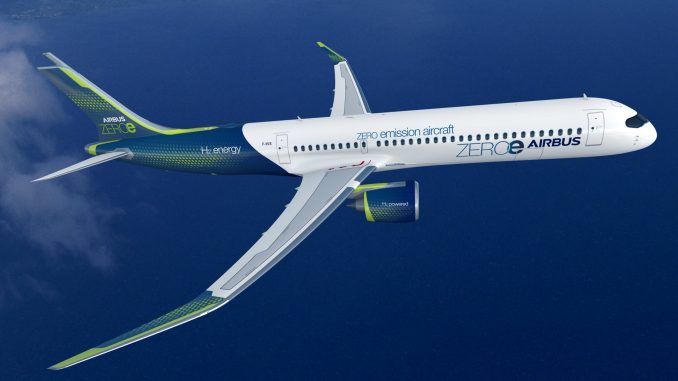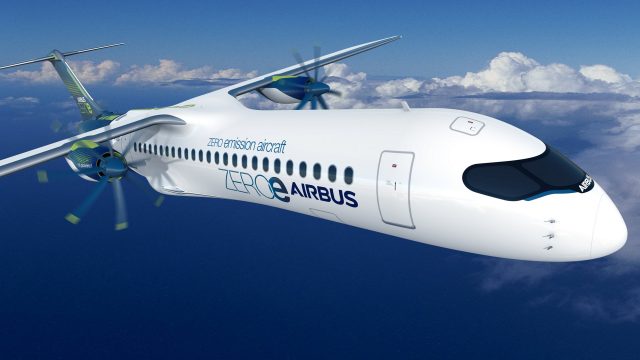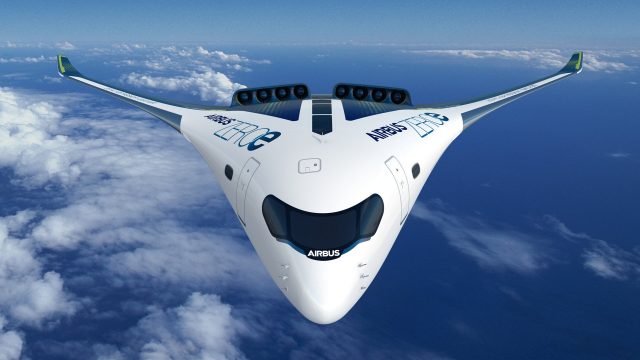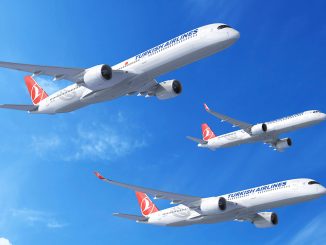
The European aircraft manufacturer has on Monday revealed new concepts for zero emission, hydrogen powered aircraft.
This new concept family includes three different aircraft types: A turboprop for up to 100 passengers and a range of 1,000 miles; A turbofan aircraft with characteristics similar to today’s A320 or Boeing 737 aircraft types; And lastly a blended wing/body aircraft which Airbus claims to be revolutionary. What all three aircraft have in common is that the hydrogen tanks are located in the fuselage itself directly behind the passenger compartment, instead of the traditional place for fuel tanks in the wings.

Airbus is projecting an entry into service (EIS) by 2035 for the first hydrogen powered aircraft, which the company has branded as ZEROe[mission], but expects to carry out a further five years of research into the technology before being able to reveal a more detailed timeline and launch date. However, a first prototype is projected to be unveiled by the next of the decade. As the reason for why it has presented three totally different concepts, Airbus noted that hydrogen needs four times as much space to store as traditional aviation fuel.

Glenn Llewellyn, Vice President for Zero-Emission Aircraft at Airbus said that “hydrogen propulsion wasn’t even on our radar as a viable emission-reduction technology” but has since revealed its “incredible potential” as an effective means to reduce CO2 emission in aviation. When asked whether battery-powered aircraft are still part of future programs, Llewellyn said that there is a place for battery-powered aircraft in aviation, especially as a future technology for smaller aircraft or urban air mobility options. But he went on to question their ability to power larger aircraft and said Airbus sees a much bigger potential in hydrogen.
Jan-Hendrik is an aviation enthusiast from Germany, loves to travel the world and fly on as many aircraft as possible. His first flight was with a Condor 757 to Spain and has been interested in aviation ever since. His fields of expertise are aircraft accidents and passenger experience (PaxEx).



